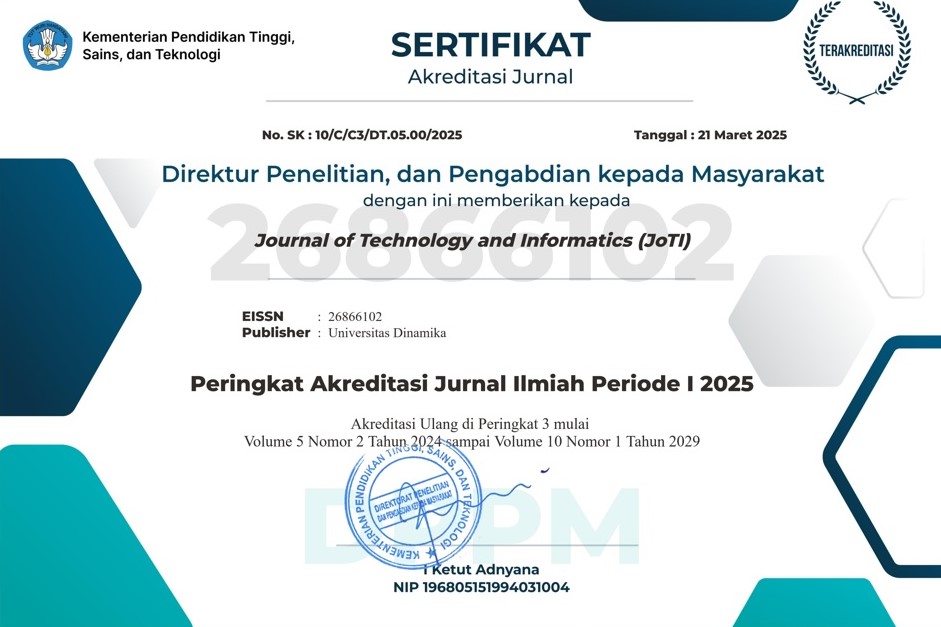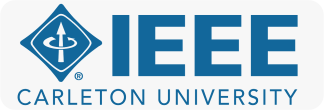Semantic Knowledge Fusion in Healthcare: A Hybrid Approach for Connected Medicine
DOI:
https://doi.org/10.37802/joti.v7i2.1182Keywords:
Artificial Intelligence in Healthcare, Data Fusion, Medical Ontology, Tabular DataAbstract
In a context where connected medicine requires increasingly explainable, accurate, and responsive systems, this paper presents an applied experimental research focusing on the development and evaluation of a hybrid intelligent assistant for healthcare data fusion. The study is based on the parallel combination of two data paradigms: classical tabular structures and their ontological equivalent. Using an intelligent assistant, we simultaneously query a medical dataset on diabetes in tabular form and the same dataset translated into an OWL ontology that can be queried using SPARQL. The aim is to demonstrate that the synchronised combination of these two models not only provides a more complete response but also one that is better contextualised and clinically exploitable. The research follows an experimental methodology, involving the implementation, testing, and comparative evaluation of both models on 300 questions classified by increasing complexity (simple, complex, and very complex). The results reveal a relevance rate above 99%, with an average response time suited to medical use. This work highlights the potential of hybrid architectures in connected health and paves the way for new decision-making assistants that fully exploit the semantic richness of medical knowledge.
Downloads
References
M. J. Hossain, M. Al-Mamun, and M. R. Islam, “Diabetes mellitus, the fastest growing global public health concern: Early detection should be focused,” Health Sci. Rep., vol. 7, no. 3, pp. e2004, Mar. 2024, doi: 10.1002/hsr2.2004.
D. Bodhini, R. W. Morton, V. Santhakumar, M. Nakabuye, H. Pomares-Millan, C. Clemmensen, S. L. Fitzpatrick, M. Guasch-Ferré, J. S. Pankow, M. Ried-Larsen, P. W. Franks, D. K. Tobias, J. Merino, V. Mohan, and R. J. F. Loos, “Impact of individual and environmental factors on dietary or lifestyle interventions to prevent type 2 diabetes development: A systematic review,” Commun. Med., vol. 3, no. 133, pp. 1–16, Oct. 2023, doi: 10.1038/s43856-023-00363-0.
S. D. Pastakia, C. R. Pekny, S. M. Manyara, and L. Fischer, “Diabetes in sub-Saharan Africa – from policy to practice to progress: Targeting the existing gaps for future care for diabetes,” Diabetes Metab. Syndr. Obes., vol. 10, pp. 247–263, Jun. 2017, doi: 10.2147/DMSO.S126314.
B. Sylla, B. Ouedraogo, S. Traore, O. Ouedraogo, L. G. B. Savadogo, and G. Diallo, “Current status of digital health interventions in the health system in Burkina Faso,” BMC Med. Inform. Decis. Mak., vol. 24, no. 171, pp. 1–10, Jun. 2024.
N. Peiffer-Smadja, S. Descousse, E. Courrèges, A. Nganbou, P. Jeanmougin, G. Birgand, S. Lénaud, A.-L. Beaumont, C. Durand, T. Delory, J. Le Bel, É. Bouvet, S. Lariven, É. D’Ortenzio, I. Konaté, M. K. Bouyou-Akotet, A. S. Ouedraogo, G. A. Kouakou, A. Poda, C. Akpovo, F.-X. Lescure, and A. Tanon, “Implementation of a clinical decision support system for antimicrobial prescribing in Sub-Saharan Africa: Multisectoral qualitative study,” J. Med. Internet Res., vol. 26, no. e45122, pp. 1–15, Oct. 2024, doi: 10.2196/45122.
S. A. Lee, S. Jain, A. Chen, K. Ono, A. Biswas, Á. Rudas, J. Fang, and J. N. Chiang, “Clinical decision support using pseudo-notes from multiple streams of EHR data,” npj Digit. Med., vol. 8, no. 394, pp. 1–10, Jul. 2025.
B. Abu-Salih, M. Al-Qurishi, M. Alweshah, M. Al-Smadi, R. Alfayez, and H. Saadeh, “Healthcare knowledge graph construction: State-of-the-art, open issues, and opportunities,” arXiv preprint, no. 2207.03771, pp. 1–25, Jul. 2022, doi: 10.48550/arXiv.2207.03771.
S. Garg, S. Parikh, and S. Garg, “Navigating healthcare insights: A bird’s eye view of explainability with knowledge graphs,” arXiv preprint, no. 2309.16593, pp. 1–8, Sep. 2023, doi: 10.48550/arXiv.2309.16593.
A. Fareedi, M. Ismail, and A. Ghazawneh, “Empowering health data fusion: A federated virtual knowledge graph approach leveraging the ONTOP platform,” Proc. Conf. Empowering Health Data Fusion, pp. 1–10, Jul. 2024, Porto, Portugal.
S. Consoli, P. Coletti, P. V. Markov, L. Orfei, I. Biazzo, L. Schuh, N. Stefanovitch, L. Bertolini, M. Ceresa, and N. I. Stilianakis, “An epidemiological knowledge graph extracted from the World Health Organization’s Disease Outbreak News,” Sci. Data, vol. 12, no. 970, pp. 1–12, Jun. 2025, doi: 10.1038/s41597-025-05276-2.
C. Yang, H. Cui, J. Lu, R. Xu, S. Wang, W. Ma, and Y. Yu, “A review on knowledge graphs for healthcare: Resources, applications, and promises,” arXiv preprint, no. 2306.04802, pp. 1–20, Aug. 2024, doi: 10.48550/arXiv.2306.04802.
Y. Lu, S. Y. Goi, X. Zhao, and J. Wang, “Biomedical knowledge graph: A survey of domains, tasks, and real-world applications,” arXiv preprint, no. 2501.11632, pp. 1–45, Jan. 2025, doi: 10.48550/arXiv.2501.11632.
H. S. Al Khatib, S. Neupane, H. K. Manchukonda, N. A. Goliarz, S. Mittal, A. Amirlafifi, and S. Rahimi, “Patient-centric knowledge graphs: A survey of current methods, challenges, and applications,” Front. Artif. Intell., vol. 7, no. 1388479, pp. 1–18, Oct. 2024, doi: 10.3389/frai.2024.1388479.
A. Carbonaro, A. Marfoglia, F. Nardini, and S. Mellone, “Corrigendum: CONNECTED – Leveraging digital twins and personal knowledge graphs in healthcare digitalization,” Front. Digit. Health, vol. 6, no. 1416390, pp. 1–2, May 2024, doi: 10.3389/fdgth.2024.1416390.
V. Fairhurst, C. S. Marcum, C. Haun, P. B. Mensah, F. Q. Arogundade, R. P. Kaul, S. Narayanan, and S. Shah, “Peer review of ‘Artificial intelligence in healthcare: 2023 year in review (preprint),’” JMIRx Med., vol. 5, no. e65151, pp. 1–3, Sep. 2024, doi: 10.2196/65151.
D. Spoladore, M. Tosi, and E. C. Lorenzini, “Ontology-based decision support systems for diabetes nutrition therapy: A systematic literature review,” Artif. Intell. Med., vol. 151, no. 102859, pp. 1–15, May 2024, doi: 10.1016/j.artmed.2024.102859.
N. N. Botha, C. E. Segbedzi, V. K. Dumahasi, S. Maneen, R. V. Kodom, I. S. Tsedze, L. A. Akoto, F. S. Atsu, O. U. Lasim, and E. W. Ansah, “Artificial intelligence in healthcare: A scoping review of perceived threats to patient rights and safety,” Arch. Public Health, vol. 82, no. 188, pp. 1–15, Oct. 2024, doi: 10.1186/s13690-024-01414-1.
Z. Wang, C. Gao, C. Xiao, and J. Sun, “MediTab: Scaling medical tabular data predictors via data consolidation, enrichment, and refinement,” arXiv preprint, no. 2305.12081, pp. 1–12, Apr. 2024, doi: 10.48550/arXiv.2305.12081.
K. Woźnica, P. Wilczyński, and P. Biecek, “SeFNet: Bridging tabular datasets with semantic feature nets,” arXiv preprint, no. 2306.11636, pp. 1–10, Jun. 2023, doi: 10.48550/arXiv.2306.11636.
A. L. Ondo, L. Capus, and M. Bousso, “Enhancing SPARQL query rewriting for complex ontology alignments,” arXiv preprint, no. 2505.01309, pp. 1–12, May 2025, doi: 10.48550/arXiv.2505.01309.
F. S. Rad, R. Hendawi, X. Yang, and J. Li, “Personalized diabetes management with digital twins: A patient-centric knowledge graph approach,” J. Pers. Med., vol. 14, no. 4, pp. 359, Mar. 2024, doi: 10.3390/jpm14040359.
Z. Qin, D. Wu, Z. Zang, X. Chen, H. Zhang, and C. U. N. Wong, “Building an intelligent diabetes Q&A system with knowledge graphs and large language models,” Front. Public Health, vol. 13, no. 1540946, pp. 1–12, Feb. 2025, doi: 10.3389/fpubh.2025.1540946.
Y. Gu, S. Kase, M. Vanni, B. Sadler, P. Liang, X. Yan, and Y. Su, “Beyond I.I.D.: Three levels of generalization for question answering on knowledge bases,” arXiv preprint, no. 2011.07743, pp. 1–12, Feb. 2021, doi: 10.48550/arXiv.2011.07743.
Y. Zhang, “Cognitive load-aware inference: A neuro-symbolic framework for optimizing the token economy of large language models,” arXiv preprint, no. 2507.00653, pp. 1–12, Jul. 2025, doi: 10.48550/arXiv.2507.00653.
P. Lewis, E. Perez, A. Piktus, F. Petroni, V. Karpukhin, N. Goyal, H. Küttler, M. Lewis, W. Yih, T. Rocktäschel, S. Riedel, and D. Kiela, “Retrieval-augmented generation for knowledge-intensive NLP tasks,” arXiv preprint, no. 2005.11401, pp. 1–20, Apr. 2021, doi: 10.48550/arXiv.2005.11401.
M. Nzomo and D. Moodley, “Integrating knowledge graphs and Bayesian networks: A hybrid approach for explainable disease risk prediction,” arXiv preprint, no. 2506.13920, pp. 1–10, Jun. 2025, doi: 10.48550/arXiv.2506.13920.
S. Ghidalia, O. Labbani Narsis, A. Bertaux, and C. Nicolle, “Combining machine learning and ontology: A systematic literature review,” arXiv preprint, no. 2401.07744, pp. 1–18, Feb. 2024, doi: 10.48550/arXiv.2401.07744.


















